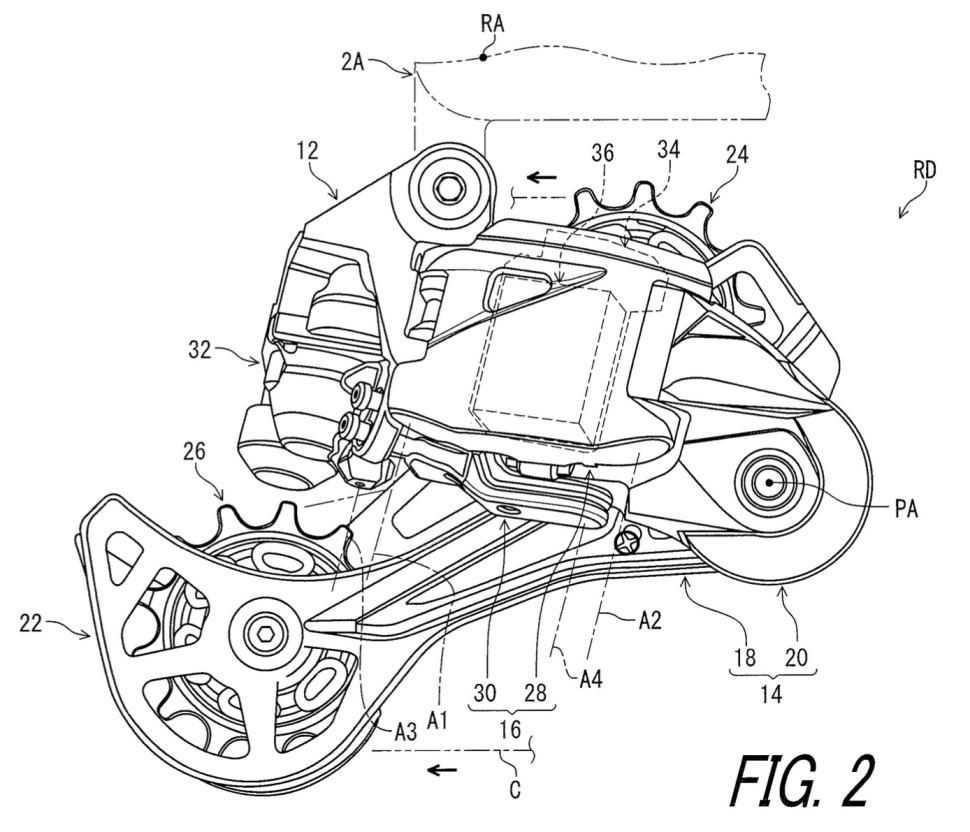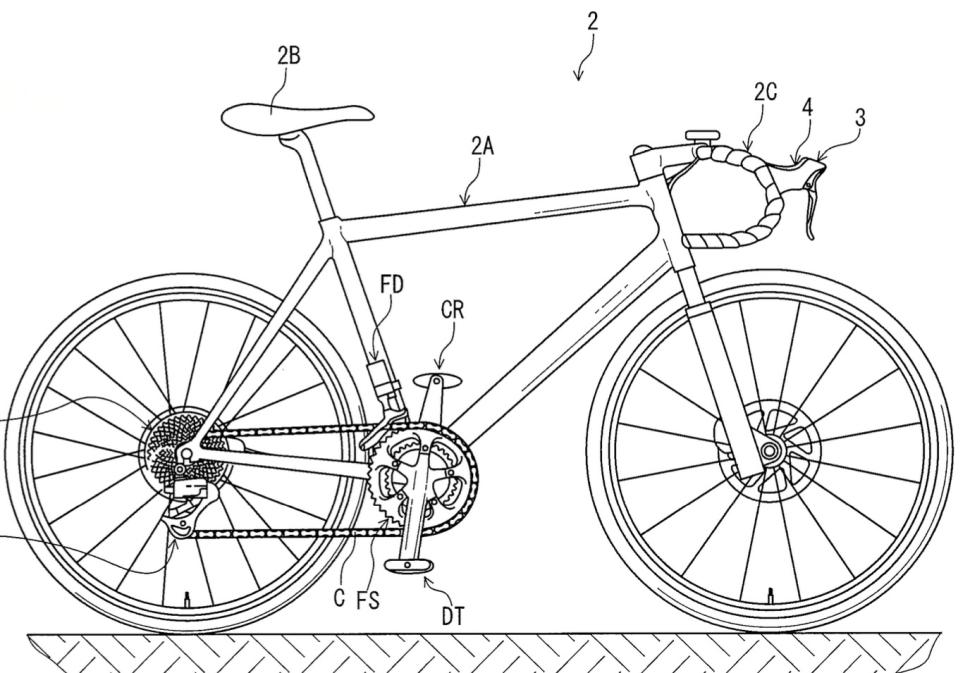- News
- Reviews
- Bikes
- Components
- Bar tape & grips
- Bottom brackets
- Brake & gear cables
- Brake & STI levers
- Brake pads & spares
- Brakes
- Cassettes & freewheels
- Chains
- Chainsets & chainrings
- Derailleurs - front
- Derailleurs - rear
- Forks
- Gear levers & shifters
- Groupsets
- Handlebars & extensions
- Headsets
- Hubs
- Inner tubes
- Pedals
- Quick releases & skewers
- Saddles
- Seatposts
- Stems
- Wheels
- Tyres
- Tubeless valves
- Accessories
- Accessories - misc
- Computer mounts
- Bags
- Bar ends
- Bike bags & cases
- Bottle cages
- Bottles
- Cameras
- Car racks
- Child seats
- Computers
- Glasses
- GPS units
- Helmets
- Lights - front
- Lights - rear
- Lights - sets
- Locks
- Mirrors
- Mudguards
- Racks
- Pumps & CO2 inflators
- Puncture kits
- Reflectives
- Smart watches
- Stands and racks
- Trailers
- Clothing
- Health, fitness and nutrition
- Tools and workshop
- Miscellaneous
- Buyers Guides
- Features
- Forum
- Recommends
- Podcast
TECH NEWS
 patent
patentShimano patents hint at fully wireless groupsets
Just-published patents suggest that Shimano could be developing fully wireless groupsets with each self-contained derailleur powered by its own battery. This would bring the Japanese component giant into line with SRAM and Campagnolo. It could be that the new technology will be introduced in the gravel-focused GRX range first.
Shimano’s Di2 electronic shift systems were originally wired throughout, although the latest generation designs are semi-wireless. This means that the derailleurs are connected to a central battery by electric cables, although the shifters communicate wirelessly.
However, two recent patents (US 2024/0092456A1, published on 21 March 2024, and US 11,958,568 B2, published yesterday) make us think that changes could be on the way.
Here’s a pic of a rear derailleur contained in Shimano’s latest patent…
The part marked 36 – the dotted-line cuboid that’s hidden away inside – is described as an “electric power source”.
Elsewhere in the patent, Shimano says, “Each of the bicycle components RD [rear derailleur] and FD [front derailleur] includes an electric power source such as a battery.”
The patent also covers the possibility of the derailleurs being connected to a battery via electric cables, as they are in current Di2. Patents generally include as many possibilities as they can to protect intellectual property, but Shimano references derailleurs with their own batteries on numerous occasions here, making us think this is at least a possibility.
Shimano also says that in one possible design, “The [rear derailleur] is configured to be wirelessly connected to the front derailleur].
As mentioned above, that’s not the case with current Di2. The derailleurs are connected by cables.
We suspect that the patent is for gravel bike components. Why? Here’s a picture of the bike shown in the patent: a drop bar bike with a suspension fork (albeit with skinny tyres).
Admittedly, that’s not conclusive because patents often contain generic images that don’t necessarily represent intended use. However, if you just wanted to show a non-specific bike, a drop bar model with a suspension fork probably wouldn’t be at the top of your list.
Beyond that, the main point of this patent is to cover a torque limiter within a rear derailleur. The idea is that the torque limiter will protect the electric motor from damage if there’s physical contact between the derailleur and an obstacle.
That on its own doesn’t point exclusively at gravel, but combined with the picture above, we’d say it’s a distinct possibility.
The other reason to suspect that Shimano might be heading in a fully wireless direction is simply that key rivals are already there. As well as the likes of SRAM and Campagnolo, we’ve told you about wireless groupset components from Chinese brands WheelTop and L-Twoo. That’s not to say that Shimano would go wireless just to join the club, but there are advantages in terms of setup and minimising structurally weakening entry/exit ports that make it an attractive choice.
What’s the likelihood of Shimano introducing fully wireless groupsets, then? We couldn’t say for sure, and we certainly wouldn’t want to put a timescale on it, but we’d say it’s a distinct possibility with next-generation components.
Mat has been in cycling media since 1996, on titles including BikeRadar, Total Bike, Total Mountain Bike, What Mountain Bike and Mountain Biking UK, and he has been editor of 220 Triathlon and Cycling Plus. Mat has been road.cc technical editor for over a decade, testing bikes, fettling the latest kit, and trying out the most up-to-the-minute clothing. He has won his category in Ironman UK 70.3 and finished on the podium in both marathons he has run. Mat is a Cambridge graduate who did a post-grad in magazine journalism, and he is a winner of the Cycling Media Award for Specialist Online Writer. Now over 50, he's riding road and gravel bikes most days for fun and fitness rather than training for competitions.
Latest Comments
- momove 4 sec ago
Yeah, I wasn't consulted for my residential street (and all of the others around me) to become a high speed cut through for motor traffic. ...
- mctrials23 33 min 12 sec ago
Theres only 2 things I can't stand in this world. People who are intolerant of other peoples cultures...and the dutch.
- cyclisto 1 hour 3 min ago
I know the Limes made a mess, but my inner self sees a bicycle commuter porn image.
- Secret_squirrel 1 hour 43 min ago
Thats if you believe that a slightly bigger bearing surface translates in any meaningful way to "pedaling stiffness" which to my mind is the...
- chrisonabike 1 hour 48 min ago
Everyone carrying more / brighter searchlights will fix things? Perhaps it helps sometimes, but I think this leads to other issues. We're already...
- SecretSam 1 hour 50 min ago
Lake's naming and sizing: never knowingly comprehensible. Good shoes, baffling range.
- hawkinspeter 1 hour 53 min ago
Yeah, I doubt if Arron Banks would be happy visiting "little Somalia" (as he referred to Bristol) and certainly I don't think Bristol's residents...
- ChasP 2 hours 30 min ago
It could be used as a reliable comparison without any calculations.


Add new comment
2 comments
£4.
Device with built in battery?? Shocking!!